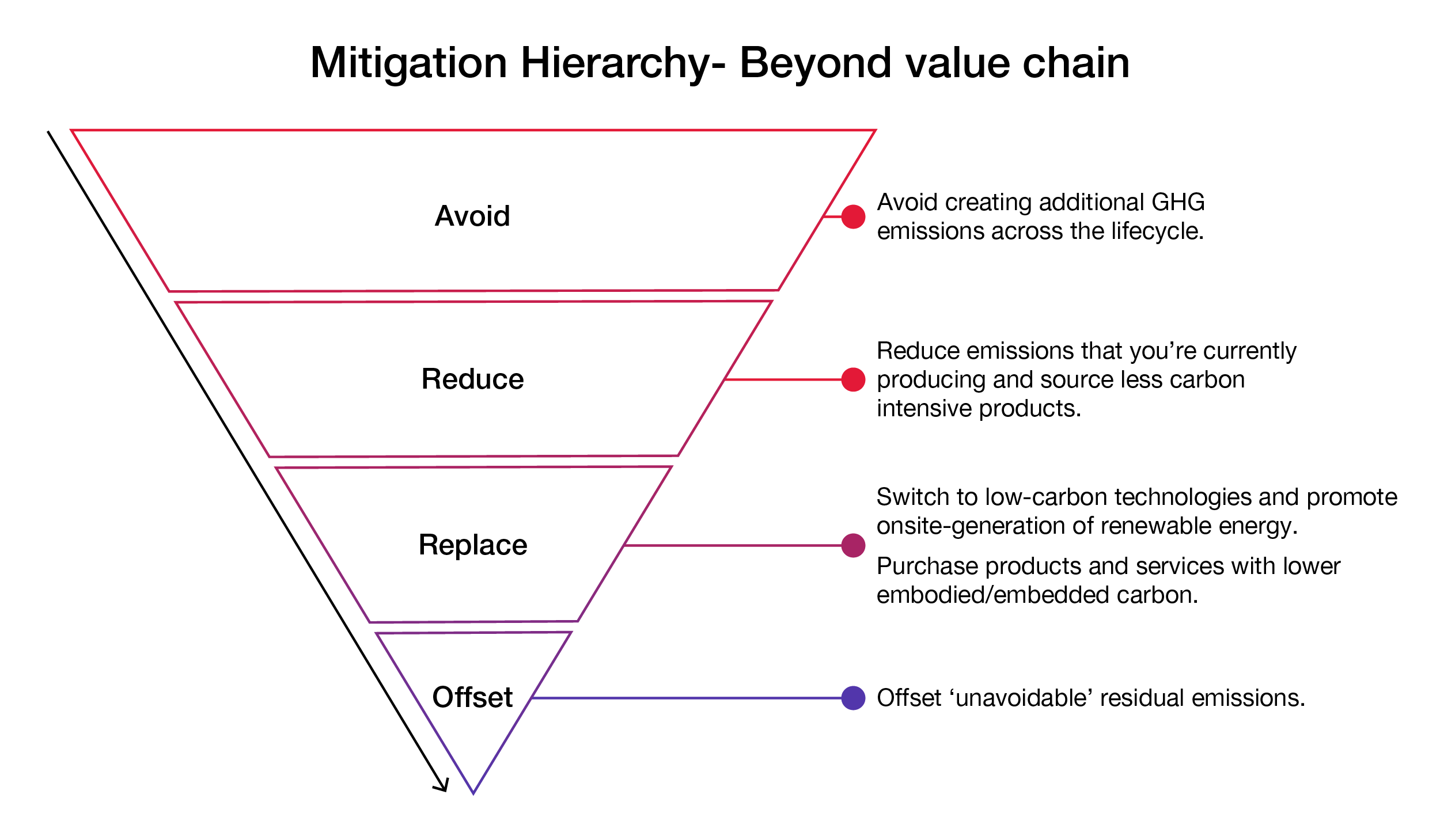Climate change is an issue that goes beyond national borders and requires international cooperation and a coordinated effort at all levels.
In September 2015, 195 countries assembled in Paris to discuss solutions to tackle the negative impacts of climate change and to limit the increase in global temperatures to 2°C above pre-industrial levels. However, despite efforts to reduce emissions, the national commitments made by governments so far is not enough to limit global temperature rise to the required level. The private sector, therefore, has a crucial role to play in the transition to a low carbon economy by setting ambitious science aligned GHG (green house gas) reduction targets.
Targets set by businesses to reduce GHG emissions are considered science-based if they are in line with the level of decarbonisation required to keep global temperatures within 1.5°C and well-below 2°C, compared to pre-industrial levels.
The Science Based Targets Initiative
The Science Based Targets initiative (SBTi) was founded in 2015 and formed through a collaboration between the World Resources Institute (WRI), the Worldwide Fund for Nature (WWF), CDP and the United Nations Global Compact (UNGC) with the intention of providing a unified framework for setting science aligned targets and making it standard practice amongst organisations. The SBTi has put together a number of methodologies and resources, aligned with climate science to help businesses to evaluate their full carbon footprint (scope 1,2&3) and set their targets. Companies have the option of choosing from 7 available methodologies to calculate their targets. Choosing the right methodology for a company will depend on a number of factors that are unique to the business such as the sector they operate in and their level of growth. The SBTi provides a number of guidance documents to help companies set SBTs which can be downloaded via the SBTi website.
Companies taking action as of July 2023
Source: https://sciencebasedtargets.org/companies-taking-action
Benefits to setting science-based targets
Whilst adopting science aligned targets are important to the global agenda of limiting temperature rises to 2°C, the business case for setting these targets is endless. Companies that have adopted science-based targets (SBTs) benefit from:
- Strengthened key stakeholder relationships, with clients, investors and partners
- Improved reputation, ultimately increasing the business value
- Compliance against current climate regulation and in-built resilience against climate change regulations
- Innovation culture and technological advancements
- Operational cost savings, such as reduced electricity costs alongside consumption
The New SBTi Standard
Whilst the concept of ‘Net Zero' has continued to gain popularity in recent years, setting SBTs in line with climate science can be challenging and whilst corporate commitments have increased, approaches, language, scope and criteria have often been inconsistent. The inconsistent language and approaches led to some uncertainty over the 'Net-zero' concept with particular fears around companies over relying on emission ‘offsetting’ to achieve Net-Zero, rather than businesses concentrating on emissions reduction. To address these concerns, in October 2021 the SBTi released their much anticipated Net-Zero Standard which provides a unified framework for organisations to set emission reduction targets that align with climate science.
Key updates from the new SBTi’s Net Zero Standard
1. Importance of staying within 1.5°C pathways: The Standard emphasises the importance of remaining within 1.5°C pathway. For absolute near-term SBTs, previous guidance required organisations to align with a ‘Well-below 2°C (WB2C) pathway for scope 1 &2 and a 2°C pathway for scope 3 at a minimum. However, from 15 July 2022, SBTi’s minimum ambition has increased to 1.5°C pathway for scope 1&2 and well-below 2°C for scope 3.
2. Rebranding of targets and stepping up SBT timeframes: Science-based targets that were previously validated by the SBTi before the release of this standard have been rebranded as ‘near-term targets’ and there has been an introduction of ‘long-term’ targets. From 15 July 2022, the maximum timeframe for businesses to set near-term targets is now 5-10 years (previously 5-15 years), to ensure businesses focus on deep decarbonisation.
3. Introduction of Long-term SBTs and neutralisation: Organisations are required to set long-term SBTs which align with a 1.5°C pathway and must include at least 95% of scope 1&2 emissions and 90% of scope 3 emissions. The standard emphasises and requires companies to achieve a 90% reduction across all emission scopes from the base year before seeking carbon removal mechanisms to remove residual emissions.
4. Increase in scope 3 ambition: Companies will need to increase the target boundary from including 67% of their scope 3 emissions for near-term targets, up to 90% for long-term targets. This also means that the level of ambition must increase from a WB2C pathway for near-term SBTs to a 1.5°C pathway for long-term targets centred on absolute reductions.
5. Release of the Net-Zero target setting tool and validation service: Alongside the new Standard, the SBTi has released a tool to help companies set their Net-Zero targets. This tool is currently different from the one used for setting near-term targets however, the SBTi has plans to merge these two tools in the future. SBTi also launched its validation service in January 2022 to validate and verify organisations Net-Zero targets, for a fee of $9,500.
6. Updated guidance on ‘beyond value chain mitigation’: The Standard contains updated information around ‘offsetting’ otherwise known as ‘beyond value chain mitigation’. Companies should refer to the SBTi’s 2020 paper for a detailed summary of best practice and approaches to offsetting. As mentioned above, organisations must focus on first reducing their emissions before embarking on neutralisation projects to remove residual emissions. Companies are however, encouraged to optionally participate in neutralisation projects as a means of helping to accelerate the development of carbon removal technologies.
Mitigation Hierarchy - Beyond value chain
Companies must reduce emissions first and remove residual emissions through neutralisation projects once their long-term SBT is achieved.
How can we help?
Looking for guidance on your organisation's Science Based Targets? At CGI, we support organisations to design creative and pragmatic sustainability strategies which engage their customers, stakeholders and employees as they navigate towards Net Zero. Find out more about our:







